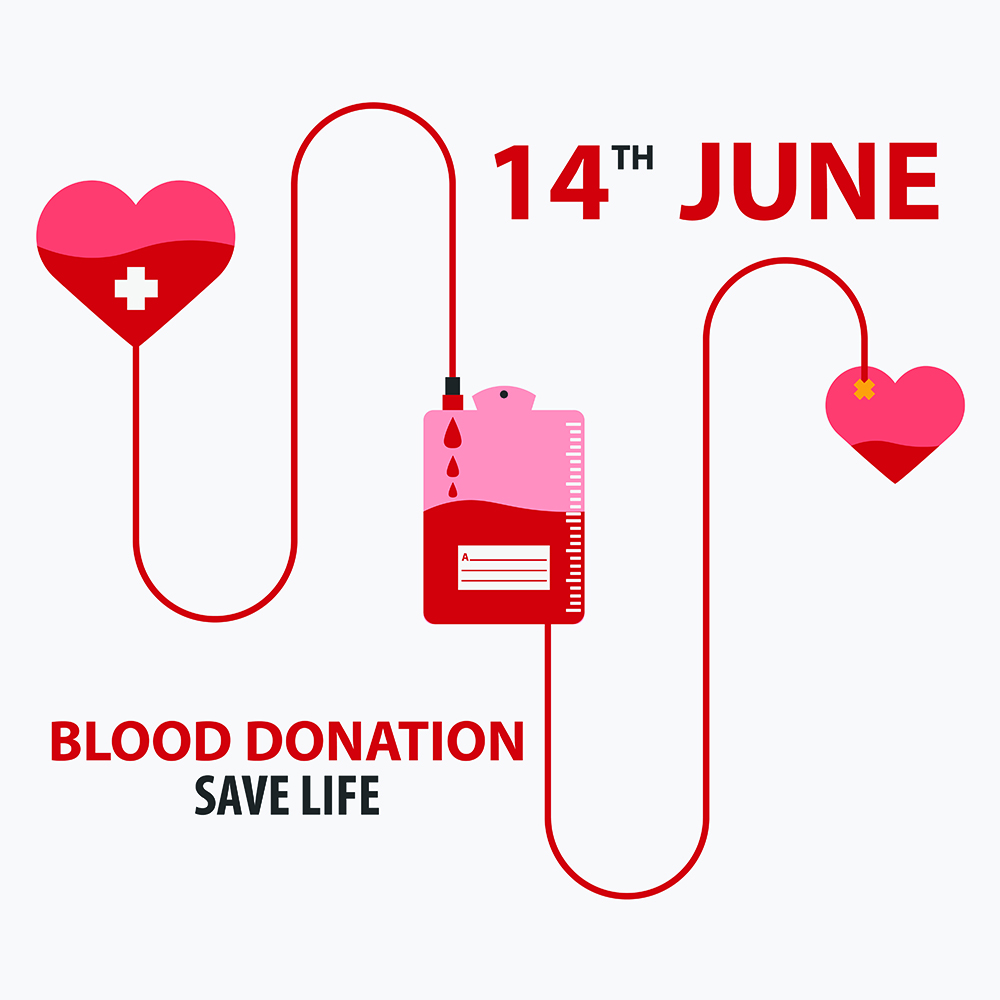
Each year, the 14th June marks World Blood Donor day. The campaign, launched by the World Health Organisation, aims to give thanks to all those who give blood each year and raise awareness of how important voluntary blood donors are in saving lives.
Each year, 112.5 million blood donations occur, but sadly most of these are in high-income countries. Today, 62 counties are able to get 100% of their blood bank stocks by voluntary, unpaid donors, with the remaining countries relying on family members or paid donors.1 Regular voluntary blood donation is essential to ensure supply always meets demand and that blood is given safely, as unpaid volunteers have been shown to have lower levels of blood-borne viruses.
The date of June 14th was chosen to honour the birthday of Karl Lansteiner, an Austrian biologist who pioneered safe blood transfusion and discovered ABO blood groups, allowing blood to be given safely to patients.
What does blood do?
Depending on your size, you have between 7 and 10.5 pints of blood circulating around your body. Blood consists of several different components, all providing an essential function for the body:
- Red blood cells – the “red” component of blood. These carry oxygen around the body and remove carbon dioxide and other waste products
- Platelets – these are important in helping the blood to clot and prevent or stop you from bleeding
- Plasma – this makes up to 55% of the total blood volume. It is a straw-coloured fluid containing up to 700 ingredients, including clotting factors, immune cells and proteins
Why do we need blood donations?2
Donated blood can be split into the separate blood products summarised above. Blood products are used in many situations. Based on 2014 hospital data for the UK, donated blood was used as follows:
- 67% was used to treat cancers, anaemia and blood disorders
- 27% was used in surgery, both elective and emergency
- 6% was used to treat blood loss in childbirth
In low-income countries, 65% of blood transfusions are given to children under the age of 5 years, in contrast with higher-income countries where the most frequently transfused group is over 65 years of age.
What are blood groups?3
Although all blood will contain the same main components, not all blood is alike. Blood can differ based on your blood group, and this is important to consider with selecting blood to transfuse.
An individual will have one of four main blood groups: A, B, AB or O. You will also be classified as either Rhesus positive or negative. The groups are decided by the genes you inherited from your parents. Blood groups are determined by which proteins are on the red blood cells (called antigens) and which immune cells are in the plasma (called antibodies). The third protein, called the Rhesus antigen, will either be positive or negative. This is summarised below:
- Group A – has only the A antigen on red cells (and B antibody in the plasma)
- Group B – has only the B antigen on red cells (and A antibody in the plasma)
- Group AB – has both A and B antigens on red cells (but neither A nor B antibody in the plasma)
- Group O – has neither A nor B antigens on red cells (but both A and B antibody are in the plasma)
O positive (O +) is the commonest blood type and AB is the most uncommon. As the most common blood type, group O + is transfused the most frequently. However O negative (O -) is the universal blood donor as it can be transfused into any blood type. Blood types must be carefully matched between donor and recipient prior to transfusing to avoid unpleasant transfusion reactions.
How is donated blood screened?
Donated blood should always be screened for blood-borne diseases including HIV, hepatitis B and C and syphilis. In the UK there is a strict screening process, but some low-income countries are not able to screen all blood. In the UK, there hasn’t been a case of anyone developing a viral infection from a blood transfusion since 2005.
How do I donate blood?
If you are interested in donating blood, you can contact your local blood giving service. They will check you are eligible to donate and give you all the information you need. Before giving blood, it’s important to keep yourself well hydrated and have plenty of rest. A health care professional will go through some questions with you regarding your health. A needle will be inserted into your veins and a machine called an Agitator will measure your donation until complete. A full donation is 470 mls and takes about 5-10 minutes. After donating, you will be invited to have something to eat or drink and relax for 15 minutes.
Can anyone give blood?
Normally, if you are fit and healthy, weigh over 50kg and are aged between 17 and 66, you will be able to give blood. Some health conditions mean that it is not safe to donate. This includes those with blood-borne infections such as hepatitis and HIV, those taking certain medications and those with certain chronic health conditions. Pregnant women are also excluded. Travel to certain countries outside the UK, or a recent tattoo or piercing may also mean you cannot give blood. For a full list of conditions, see the NHS Blood Donation website.
This article is for information only and should not be used for the diagnosis or treatment of medical conditions. myHealthSpecialist makes no representations as to the accuracy or completeness of any of the information in this article, or found by following any link from this article. Please consult a doctor or other healthcare professional for medical advice.

Dr Anna Cantlay, GP
Read Dr Anna Cantlay’s other articles:
Don’t be a FLUgitive
Herbs for menopause – does natural mean safe?
Should the NHS be “PrEPing” patients in the battle against HIV?
Is your job literally “suffocating” you?
Yoga: Mind, body and soul
When is the “right time” to try for a baby?
Vitamin D – The Sunshine Vitamin
Some sound advice: Could you be affected by hearing loss?
Follow Dr Anna Cantlay on Instagram: doctoranna_gp